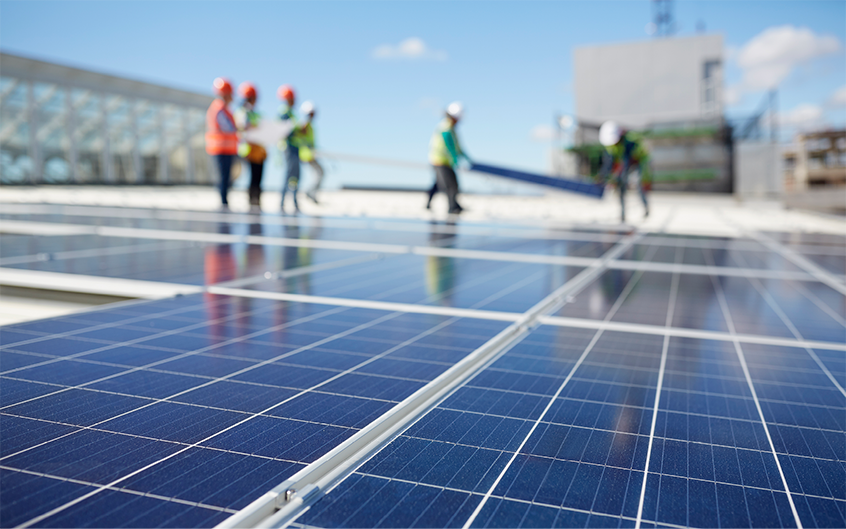Canada’s Energy Transition: Historical and Future Changes to Energy Systems – Update – An Energy Market Assessment

7. Conclusion
Challenges and Uncertainty
The current transition has plenty of challenges and uncertainties ahead. Factors that play a role in the transition will involve aspects such as technological developments, policies, consumer preferences, new forms of energy, and new ways of using energy.
A transition to a lower-carbon economy will affect all of our existing energy systems. The transition will affect what types of energy are used, in what applications types of energy are used, how efficiently energy is used, and what role technologies will play in offsetting or storing carbon emissions.
Ultimately, energy-related emissions are a function of how much energy is used and the overall emission intensity of that energy. Recalling the links between energy use, the economy, and emissions described in Section 4, there are an infinite number of combinations of energy use and emission intensity that an economy can strive for with the goal of reducing emissions by a given amount.
Figure 22 shows various alternative pathways, assuming lower annual energy-related emissions.Footnote 66 It illustrates the challenges that lie ahead for Canada to reduce its energy-related emissions, including the substantial changes that are required to the ways we produce and consume energy. For example, achieving a 30% reduction in annual energy-related emissions (that is, reaching 417 MT of CO2e) would require: reducing average emissions intensity to 33 grams per MJ (holding total energy use constant), or reducing total energy use to 8 860 PJ (holding average emissions intensity constant), or any of the combinations between these two points.
Figure 22: Pathways to Achieving Emissions Reductions in Canada
Source: NEB
Description:
This graph illustrates the relationship between total energy use in Canada (in PJ) and the emission intensity of our energy use (as measured in grams of CO2e per MJ). The top line represents this relationship, holding annual energy-related emissions in 2005 constant (595 MT of CO2e). In 2005, Canada’s energy use was 12 770 PJ and Canada’s emissions intensity was approximately 47 grams per MJ.
All energy transitions come at a cost, and the current transition is no exception. The Conference Board of Canada notes that carbon pricing and decarbonization of electricity generation will have a small negative effect on the economy and that investments in clean energy technology will reach into the trillions of dollars.Footnote 67 ECCC projects that the Pan-Canadian Framework will reduce the level of GDP by about 0.35% in 2022. ECCC also states that this figure is likely an overestimate and that the costs of not taking action to address climate change are greater than the costs of addressing it.Footnote 68
The largest uncertainty is the pace of the transition. The transition could be swift and dramatic,Footnote 69 or gradual and uneven. While history suggests that energy transitions are generally slow paced, the drivers of the current transition are different from the drivers of past transitions.Footnote 70 In Energy Transitions, Vaclav Smil concludes:Footnote 71
The Transition is Happening Now
The energy transition is happening right now, as energy systems in Canada and around the world are changing. The fundamental components of the energy transition, as described in Section 4, illustrate that:
- Canada’s electricity grid has one of the lowest carbon intensities in the world. In provinces and territories that rely heavily on fossil fuels for electricity, efforts to decarbonize continue with coal phase-outs and higher deployment of renewables.
- Though still in its early stages, end-use fuel switching with respect to personal transportation, continues to grow. Fuel and fuel economy standards continue to strengthen.
- Canadians are using energy more efficiently, and the trend of using energy more efficiently is expected to continue into the future.
- Policy initiatives at all levels of government are helping Canada move forward with the energy transition.
While the progress made to date is noteworthy, additional action is required by governments, businesses, and citizens for Canada to achieve its existing climate commitments. Canada’s emission intensity is among the highest in the developed world due largely to its landscape, climate, and industrial structure. However, as ongoing progress has shown, these factors do not preclude Canada from doing more to further alter its emission trajectory in the future.
This report has shown that the future will likely look very different than the past. Over the last 100 years, global energy use increased dramatically—driven mostly by abundant and affordable fossil fuels. Most indications are that global energy demand growth will slow and will include a more diverse slate of energy sources. Finally, if the world is successful at meeting its long-term climate change objectives, the next 100 years in energy could be just as dynamic and transformative as the last century.

- Date modified:
